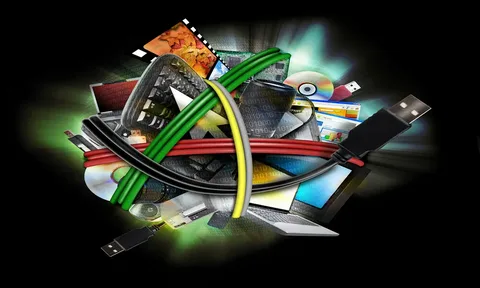The Evolution and Impact of Multimedia in Modern Communication

Introduction
In an era dominated by rapid technological advancements, multimedia has emerged as a cornerstone of communication, education, and entertainment. By integrating various content forms such as text, audio, images, animations, and video, multimedia transcends traditional boundaries, offering richer and more engaging experiences. This article explores the evolution of multimedia, its applications, and its profound impact on society.
The Evolution of Multimedia
Multimedia's roots can be traced back to the early days of computing when simple text and static images were the norm. The introduction of sound cards in the 1980s marked a significant turning point, allowing computers to process audio. The 1990s saw the rise of the internet, which further propelled multimedia into the mainstream. As bandwidth increased, so did the capabilities of multimedia applications.
Today, multimedia is ubiquitous, found in everything from online articles and social media posts to educational platforms and marketing campaigns. The evolution of technologies such as HTML5, CSS3, and advanced video codecs has made it easier than ever to create and distribute rich multimedia content.
Applications of Multimedia
-
Education: Multimedia has revolutionized education by creating immersive learning environments. E-learning platforms utilize videos, interactive quizzes, and virtual simulations to enhance understanding and retention. For example, platforms like Khan Academy and Coursera offer diverse multimedia resources that cater to various learning styles.
-
Marketing and Advertising: Businesses leverage multimedia to capture attention and convey messages effectively. Advertisements featuring vibrant visuals, catchy music, and compelling narratives are more likely to engage consumers. Social media platforms, with their emphasis on multimedia content, have become crucial for brand promotion.
-
Entertainment: The entertainment industry relies heavily on multimedia. Movies, video games, and music videos combine various media elements to create captivating experiences. The rise of streaming services has further transformed how audiences consume content, allowing for on-demand access to a vast array of multimedia.
-
Art and Design: Multimedia has opened new avenues for artists and designers. Digital art, interactive installations, and augmented reality experiences challenge traditional notions of creativity, allowing artists to engage audiences in innovative ways.
The Impact of Multimedia on Society
The integration of multimedia into daily life has had significant implications for society. Here are a few key impacts:
-
Enhanced Communication: Multimedia enables more effective communication by combining various content types. It allows individuals to convey complex ideas more clearly and persuasively.
-
Global Connectivity: The internet has democratized access to multimedia, allowing people from different cultures and backgrounds to share their stories and experiences. This has fostered greater understanding and collaboration on a global scale.
-
Cognitive Engagement: Research suggests that multimedia can enhance cognitive engagement and memory retention. The combination of visual and auditory stimuli often leads to a more profound understanding of information.
-
Challenges and Considerations: Despite its advantages, multimedia also presents challenges. The overwhelming amount of content can lead to information overload, and issues such as digital divide and accessibility must be addressed to ensure equitable access to multimedia resources.
Conclusion
Multimedia has transformed the way we communicate, learn, and create. Its ability to blend various forms of content has enriched our experiences and broadened our horizons. As technology continues to evolve, the potential for multimedia applications will only expand, promising new ways to connect and engage in an increasingly digital world. Embracing these innovations while addressing the challenges they present will be crucial as we navigate the future of multimedia communication.
- Arts
- Business
- Computers
- Giochi
- Health
- Home
- Kids and Teens
- Money
- News
- Recreation
- Reference
- Regional
- Science
- Shopping
- Society
- Sports
- Бизнес
- Деньги
- Дом
- Досуг
- Здоровье
- Игры
- Искусство
- Источники информации
- Компьютеры
- Наука
- Новости и СМИ
- Общество
- Покупки
- Спорт
- Страны и регионы
- World


